
Back in the day, Patreon was a game-changer for content creators who were looking to grow their audiences and earn recurring revenue. Founded ten years ago, the site laid the foundation for creators to be able to easily monetize their online content. Fast forward to today, and many creators are scouring the internet in search of alternatives to Patreon.
Why? For many reasons, including rising price points and ubiquitous Patreon branding. Naturally, other membership sites have started popping up and have both iterated and expanded on what initially made Patreon special — offering creators even more tools and affordable price points.
If you’re on the hunt for some alternatives to Patreon, look no further. But first, let’s quickly cover Patreon’s offerings so that you can make the absolute best, informed decision.
What is Patreon?
Patreon started back in 2013 and was the first premiere monetization platform. It provides business tools for content creators to run subscription services, grow their following, and earn recurring income, while also offering rewards and perks to its paid subscribers.
The site touts multiple ways its content creators can earn income and unlock creative (and business) growth through five core features:
-
Multimedia publishing
-
Native video hosting and previews
-
Exclusive podcast feeds
-
Personalization options
-
Analytics and insights
Patreon also offers a suite of resources to its members, including a creator hub, newsroom, help center, and more. However, it’s important to note that, with all these integrations and support, fees have spiked to meet the overwhelming demand.
So, while Patreon may have been the best option at one point in time, it’s no longer the only option.
Who are video memberships and subscriptions for?
Let’s pause for a brief moment to recap who these video memberships and subscriptions are actually for.
Audiences who are looking for engaging, informative content that is hyper-focused on a subject or topic of interest are going to want to pay for video membership subscriptions. Why? Because the value is clear to them: They can’t find that content anywhere else.
That’s where you come in.
Your personality—your authentic spin—is what makes your online fitness business, e-learning course, or live streamed video content unique and appealing to audiences. It’s going to be the driving force behind their decision to become a paid subscriber to your site.
Let’s take a quick look at how to build a successful video membership site.
How do I create a video membership website?
First, you’ll want to select an affordable content management system (CMS) to run your website. Make sure you pick something user-friendly and customizable, like Squarespace or Wix. (You can find a roundup of our favorite CMS sites here.) The key is to go with an option that’s very intuitive so that you can edit copy and make changes on the fly.
Your time is valuable. You can’t afford to spend hours fumbling through clunky interfaces and confusing navigation. You need simplicity.
Next, you’ll want to plan your content, solidify a release schedule, and choose some pricing options that make the most sense for your audience.
Tip: Get to know your subscribers by staying engaged on social media channels! This will help you determine your content strategy and what to charge. (You run the risk of losing some followers if your subscription isn’t competitively priced; market research is your best friend.)
Let’s get to it. Here are our top 13 alternatives to Patreon:
Kickstarter
Kickstarter is definitely a household name, especially when it comes to online crowdfunding campaigns. Launched all the way back in 2009, the site has become a go-to destination for content creators looking to secure funding for various projects.
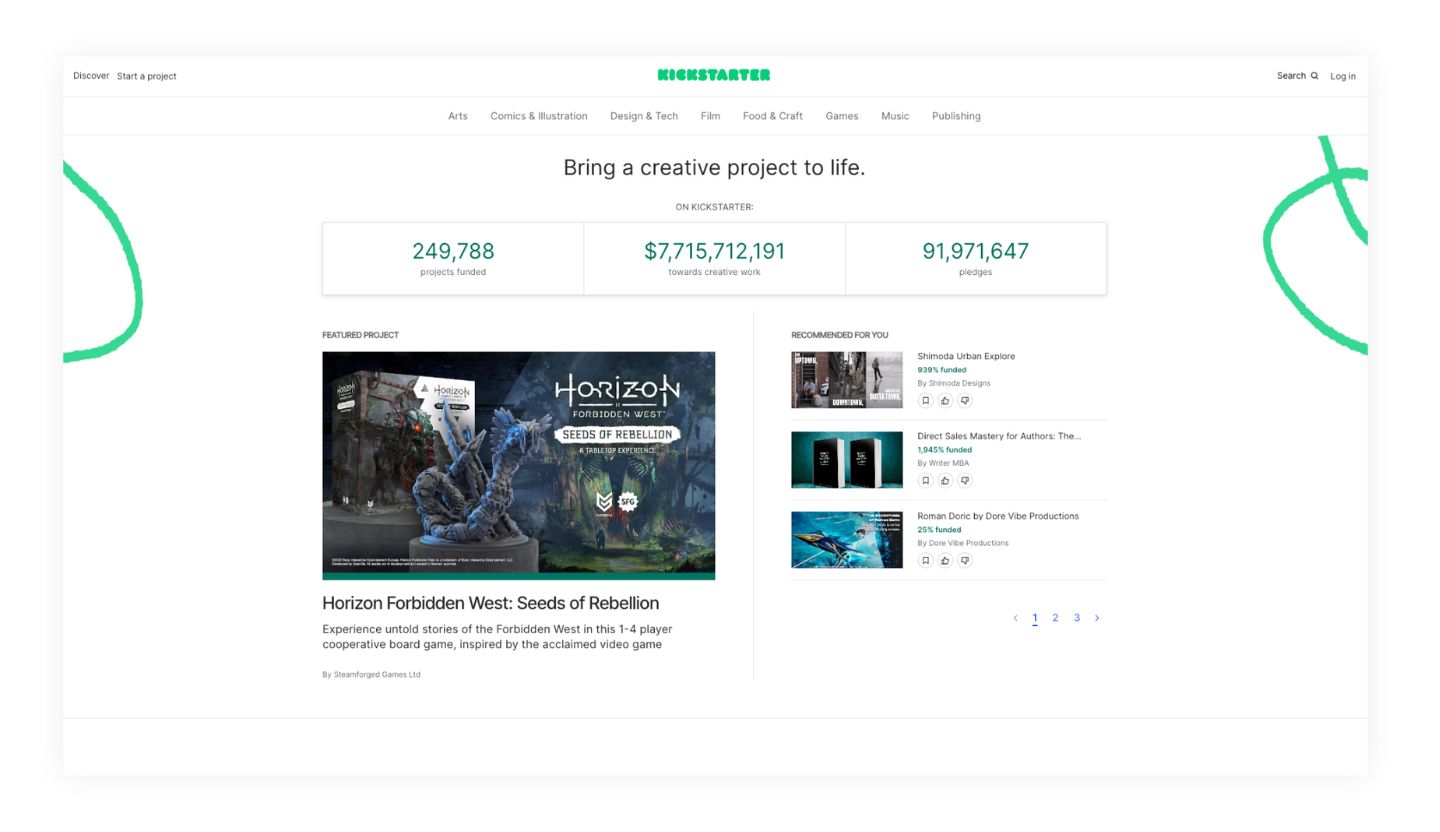
Since its inception, Kickstarter has launched over 609,000 projects and received pledges worth more than $7.68 billion (as of November 2023)! The site is used by everyone from authors looking to self-publish a book, to independent bands and artists campaigning for their next album—and everyone in between.
Pros
-
Intuitive, user-friendly interface
-
It’s completely free (until the goal is met)
-
You keep 100% of the creative ownership
-
You can offer special perks/tiers to incentivize backers to give more
Cons
-
Kickstarter is campaign-focused and not an actual marketplace
-
If you don’t meet your goal, you don’t get paid
-
Kickstarter takes a steep fee with every successful campaign
-
You can’t contribute to your own campaign
-
Kickstarter has strict guidelines and standards
-
Because it’s for everyone, it lacks video creator–specific tools
Uses
-
Product fundraising, like board games
-
Narrative filmmaking
-
YouTube content
-
Podcasting
-
Almost anything else
Sellfy
Sellfy is an ecommerce website builder that’s great for entrepreneurial content creators in search of a “starter store.” The site was founded in 2011 as the intuitive, easy-to-use alternative to Shopify, and guarantees that its members can sell their merchandise or digital products “hassle-free.”
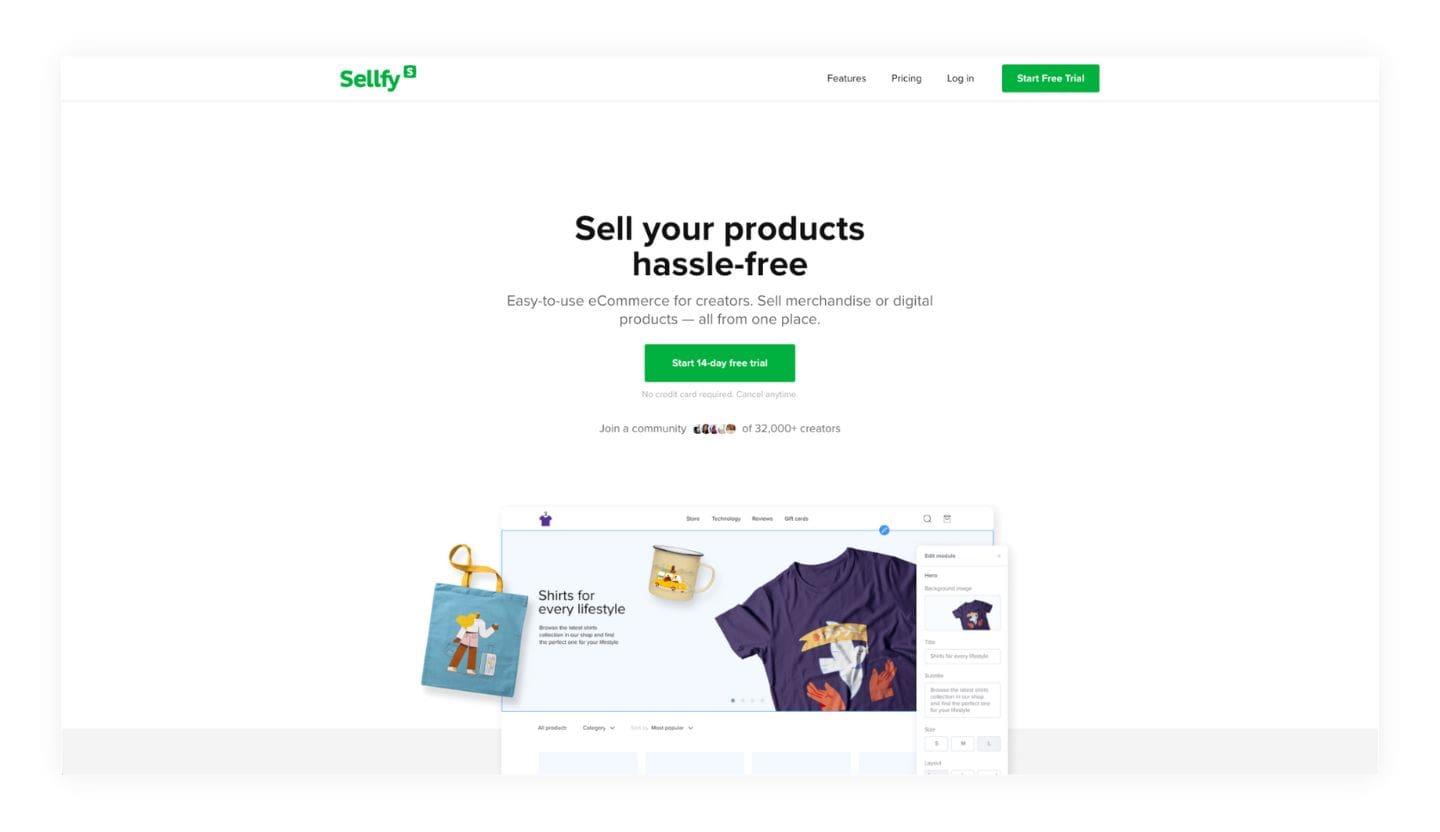
Sellfy should appeal to creators with goals of launching an online store fast. Few other platforms can get an ecommerce site up and running in five minutes or less; however, Sellfy’s simplicity also means that it lacks the tools needed to scale and grow—especially video creators who need certain tools to reach their audiences on various channels.
Pros
-
Out-of-the-box features
-
Launch your site in a few clicks
-
Built-in creator tools, like print on demand
-
Small business friendly
-
$0 in transaction fees
-
Mobile integrations and capabilities
-
Quick payouts via PayPal and Stripe
Cons
-
Limited marketing features
-
Simplified (and lacking in) customizations
-
Very basic analytic tools
-
Few integration options
-
Lacks video creator–specific features
Uses
-
Digital creators
-
Content creators
-
Merchandising
Memberful
We’ll pull this straight from the horse’s mouth: Memberful boasts the “best-in-class membership software for independent creators, publishers, educators, podcasters, and more.” Their site offers unique flexibility so that it can grow with the creator as their business changes.
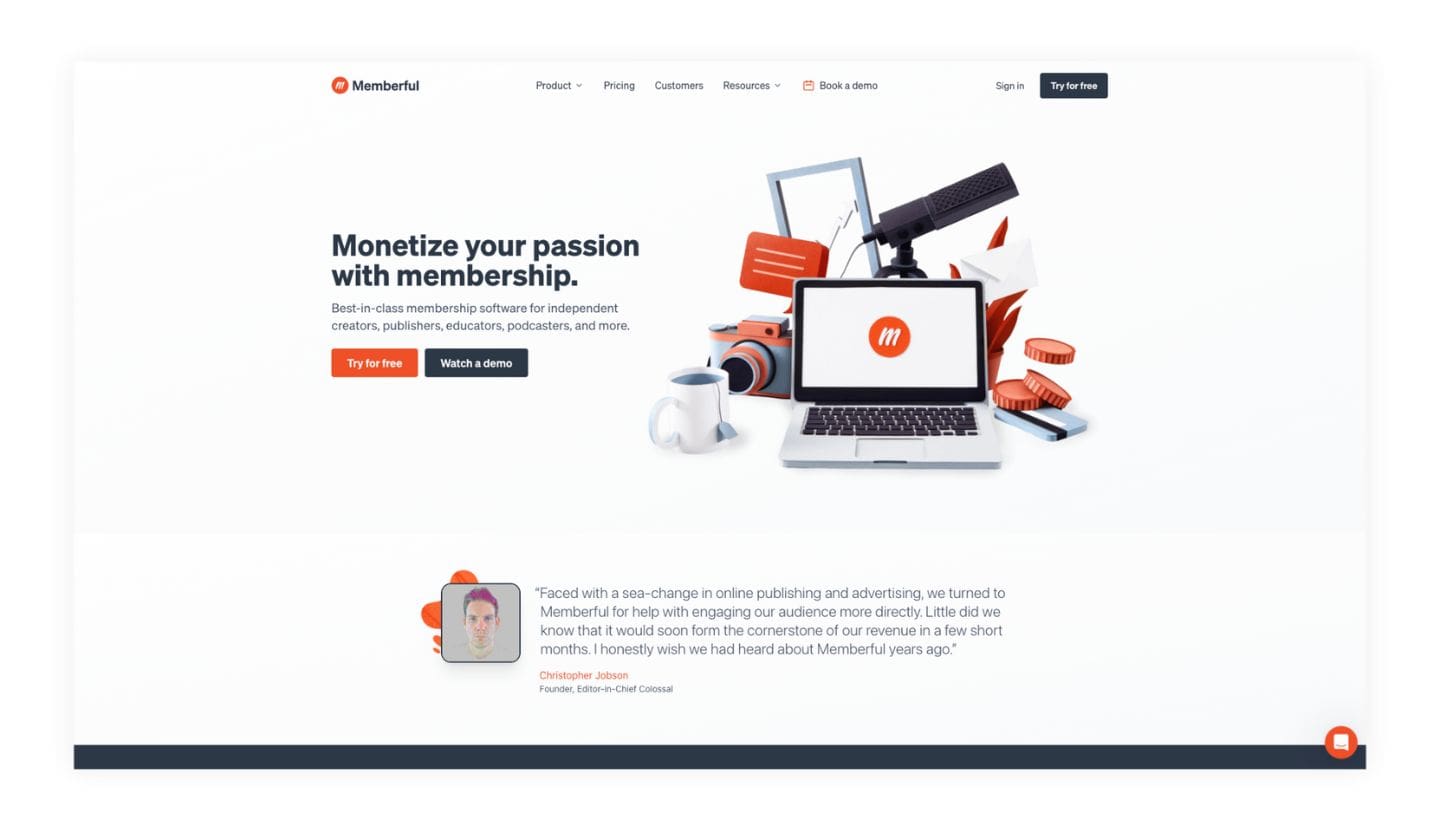
To this end, the site offers a lot of branding and customization options to its customers, equipping them to be able to tailor-make the user experience to fit their specific content requirements.
Pros
-
Fully hosted membership website
-
Optimized checkout
-
Dashboard analytics and integration with Google Analytics
-
Easy member management
-
Choose what you pay, one-time payments
-
Integration partner features
Cons
-
Data limitations
-
Issues with certain integrations
-
It’s not the cheapest, most affordable option
Uses
-
Gated content
-
Private podcasts
-
Newsletters
-
Communities
-
E-learning courses
Indiegogo
Similarly to Kickstarter, Indiegogo is a crowdfunding platform for creators to easily fundraise and gather support for important projects. But, the site tends to draw interest from creators of physical products, not just digital ones. From their site: “[This] is where early adopters and innovation seekers find lively, imaginative tech before it hits the mainstream.”
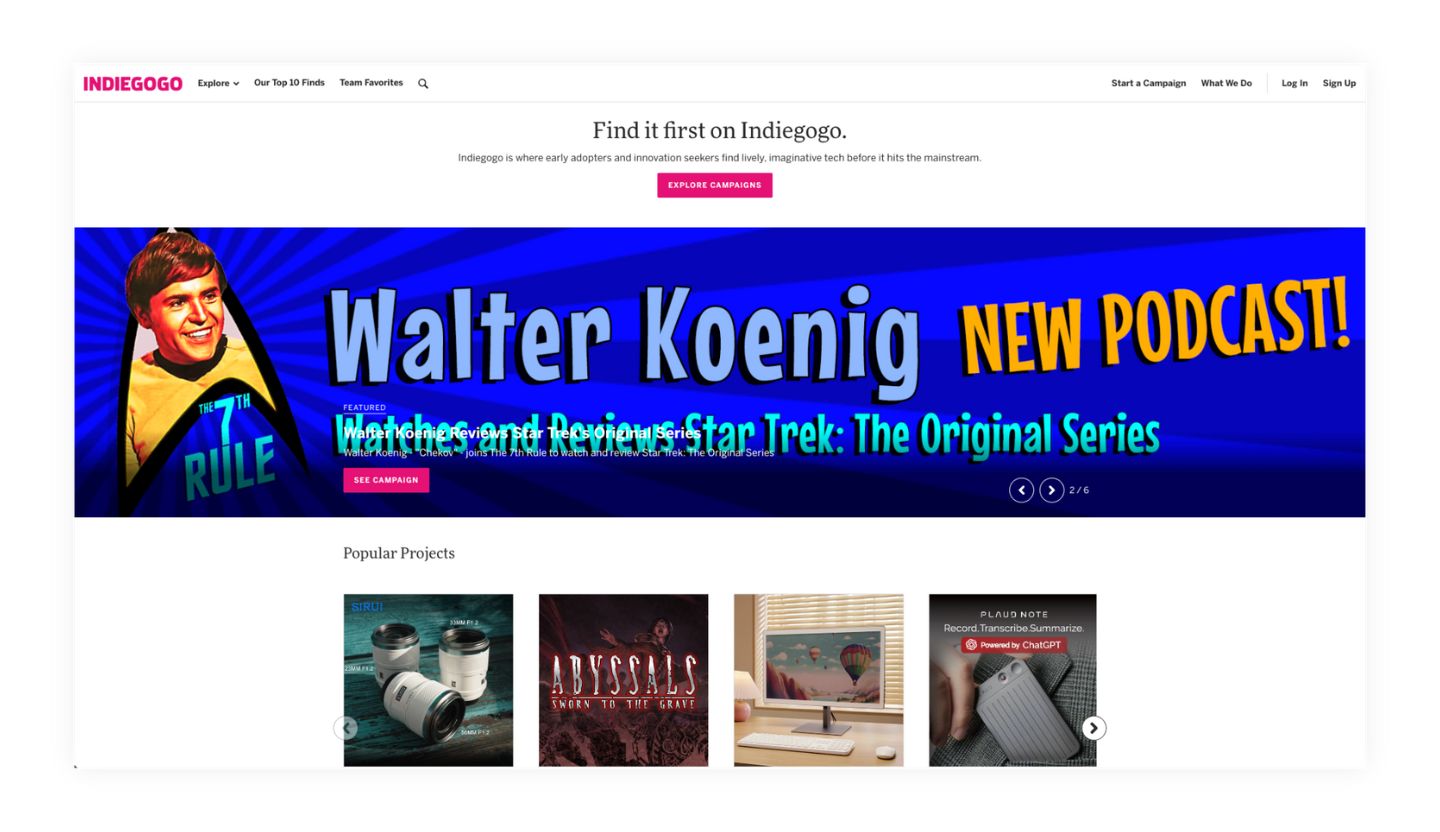
Whatever the case, it’s clear that Indiegogo has the tools and features needed for content creators to drum up the interest and funds needed to execute their content for their audiences.
Pros
-
User-friendly interface makes it easy (and quick) to get started
-
You can keep raising money, even after the campaign’s goals are met
-
Unlike Kickstarter, you can retain funds even if the overall goal isn’t met
Cons
-
Indiegogo takes a 5% campaign fee on top of a payment processing fee
-
Like Kickstarter, this is a campaign-focused tool and not a marketplace
-
Indiegogo (and crowdfunding in general) isn’t conducive for scalable, repeating income earning
Uses
-
Product fundraising, like board games
-
Gear and tech creation
-
Narrative filmmaking
-
YouTube content
-
Podcasting
Hypage
Hypage is a mobile-friendly “bio link” platform designed to help creators sell exclusive content, create membership subscriptions, accept donations, and allow custom requests. Billed as the all-in-one Linktree, Patreon, and Gumroad solution, Hypage makes it easy to sell premium videos, files, ebooks, and basically any conceivable digital download.
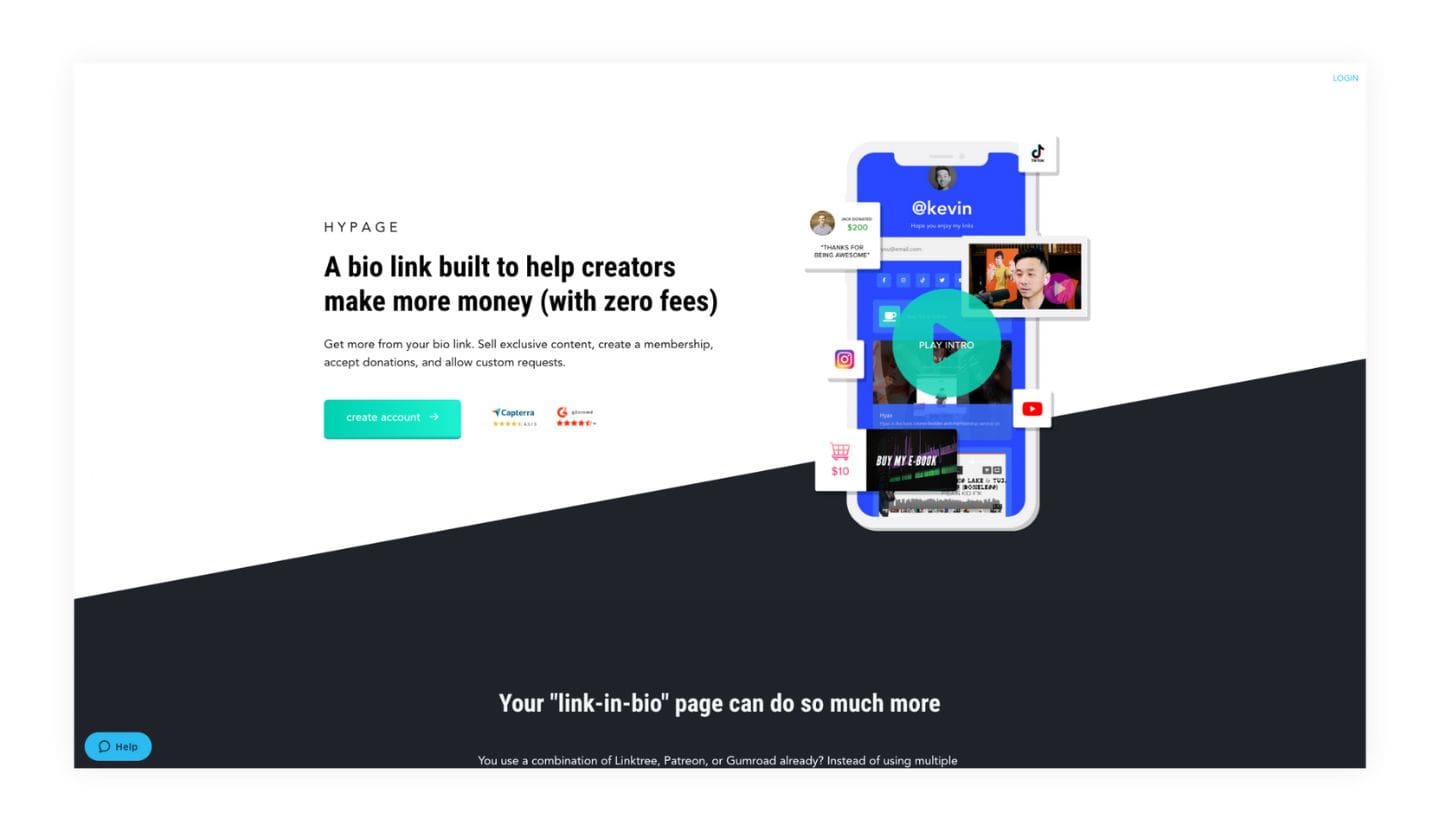
Hypage appeals to influencers and creators who focus on mobile content, and as a result, a lot of its functionality and customization are lacking, particularly when it comes to desktop usage. Additionally, if you want to offer memberships or subscriptions, you’ll have to upgrade to Hypage’s enterprise plan.
Pros
-
Collect emails
-
Zero transaction fees
-
You can accept requests and donations
-
They handle file delivery, payment, security, and user access
Cons
-
Membership subscriptions is limited to the enterprise plan
-
Customization leaves a lot to be desired
-
Doesn't support YouTube RSS feed-UI
Uses
-
Influencers
-
Digital creators
-
Content creators
-
Gated content
Substack
In 2017, Substack launched with the intention of becoming the subscription network for independent writers and creators. And, for the most part, they’ve done just that. On their site, you have full ownership of your intellectual property, mailing list, and subscriber payments. You have full editorial control without having to deal with gatekeepers — a journalist’s dream come true!
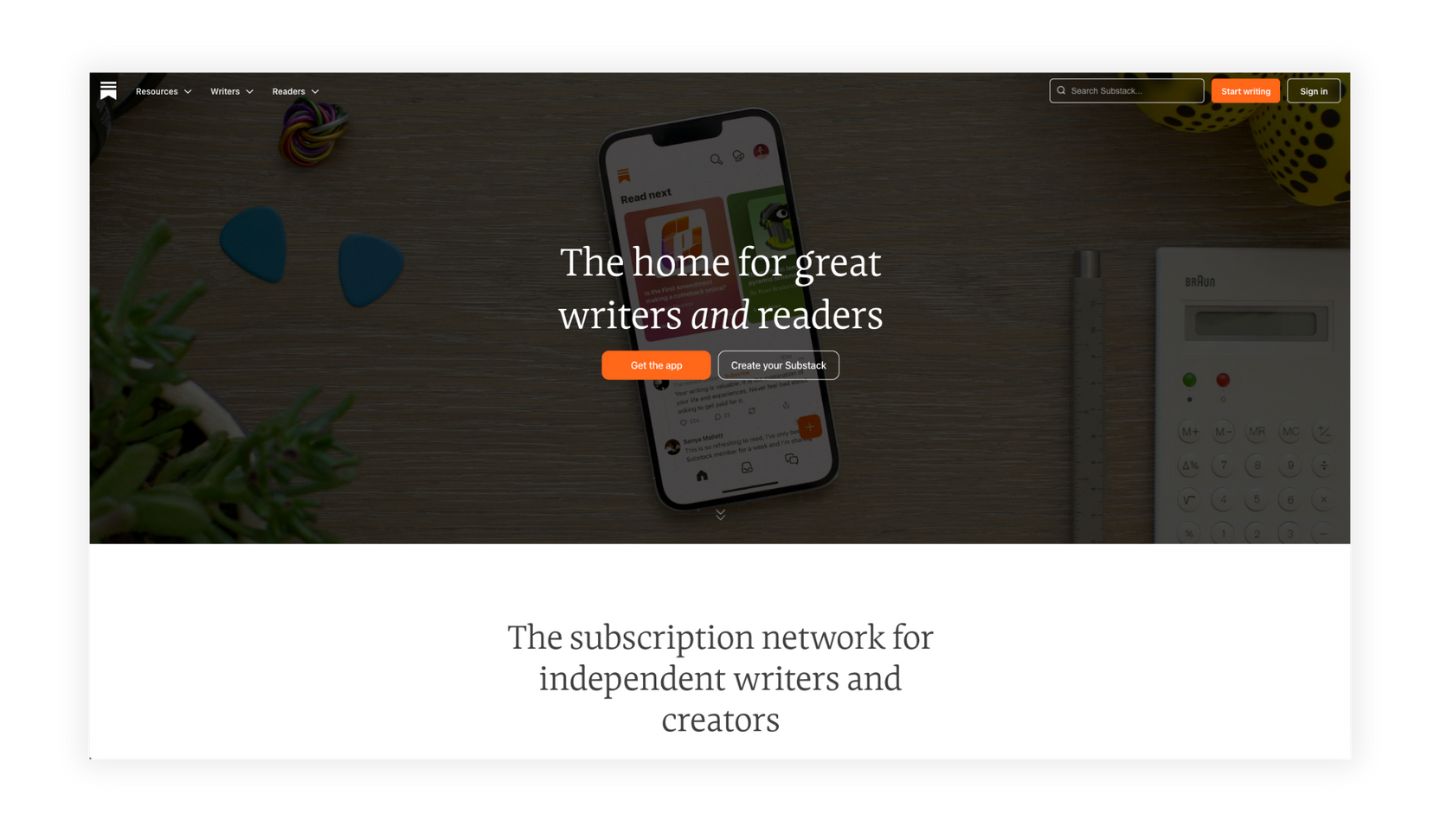
Plus, Substack offers tools for writers to integrate gated video or podcast content directly into “Substack posts,” while comments and community threads connect writers and their subscribers directly.
Pros
-
It’s free to get started
-
Own 100% of your content
-
Bundle podcasts, video, and community
-
Import existing posts from Wordpress, Mailchimp, Medium, Tumblr, or others
Cons
-
No automation features
-
Doesn’t offer personalization tags
-
Substack retains a 10% cut of revenues
-
The more you make, the more you pay Substack
Uses
-
Email capture and distribution
-
Content writers
-
Podcasters
-
Newsletter
Ko-Fi
Ko-fi is used by one million creators across the globe. The site helps creators scale their enterprises by empowering them to accept donations and monthly memberships—all in one place.
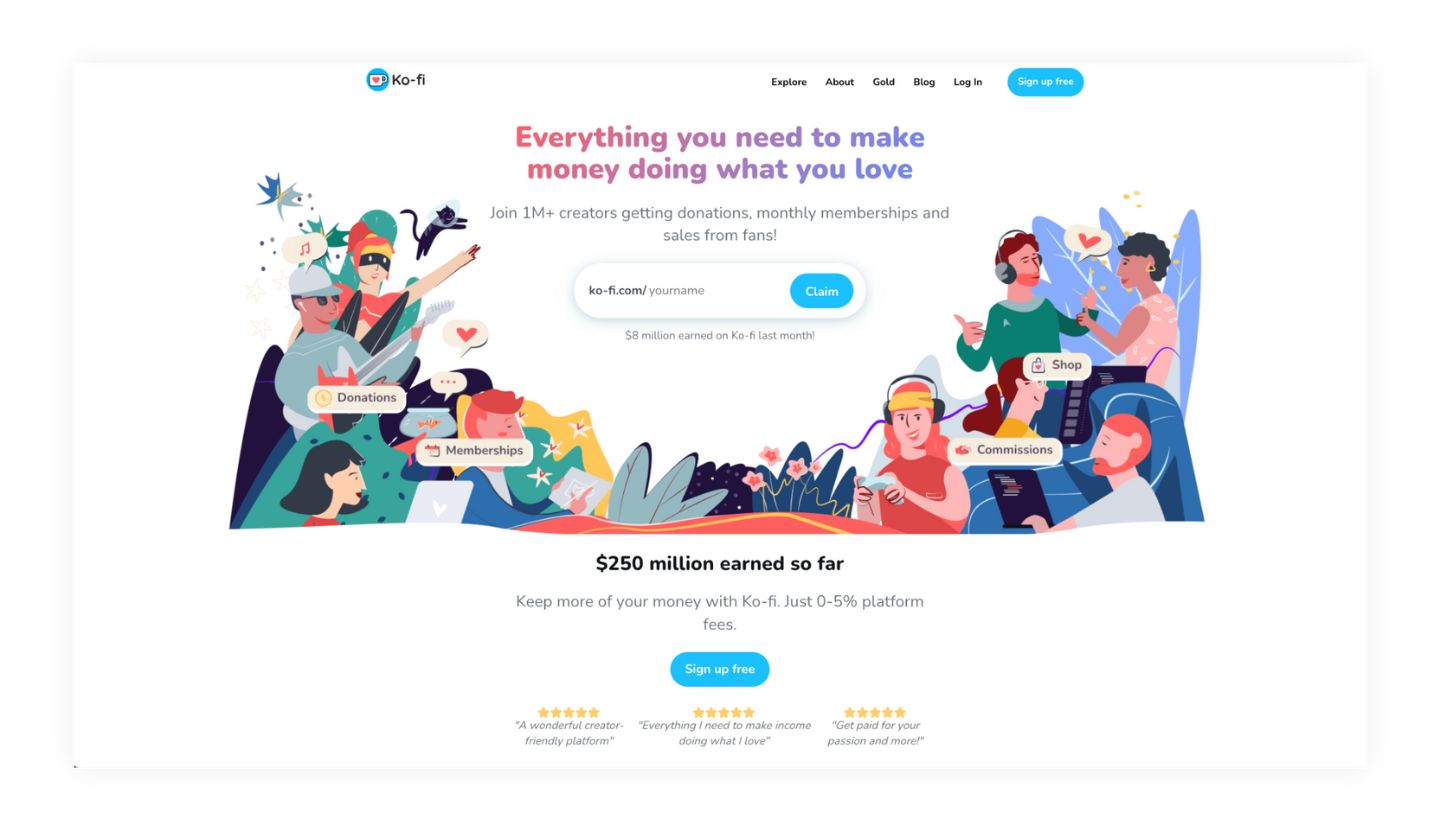
One of the things that appeals to its users is the low-stakes, no-pressure approach to e-commerce. You can start with a free tip jar for what you’re already creating and offer supporters more whenever you like. Ko-fi is a “friendly way to earn an income” with features for every kind of content creator.
Pros
-
$0 fees on donations
-
Keep 100% ownership of your content
-
Virtually any kind of creator can use Ko-Fi
Cons
-
Ko-Fi takes 5% of all commission earned on their site
-
Many creators reported not making enough on Ko-Fi for it to be their only source of income
-
Because they use a “tip jar” model, Ko-Fi isn’t the best option if you’re trying to grow and scale your content strategy
Uses
-
Artists
-
Writers
-
Streamers
-
Cosplayers
-
Podcasters
-
Video creators
-
Community groups
Mighty Networks
Mighty Networks is a powerful tool for creators in the e-learning space who already have a steady stream of content, courses, and an engaged community. They believe that when creators put community at the center of online courses and memberships, they can “create magical member experiences [that are] just not possible with a chat app or Facebook group.”
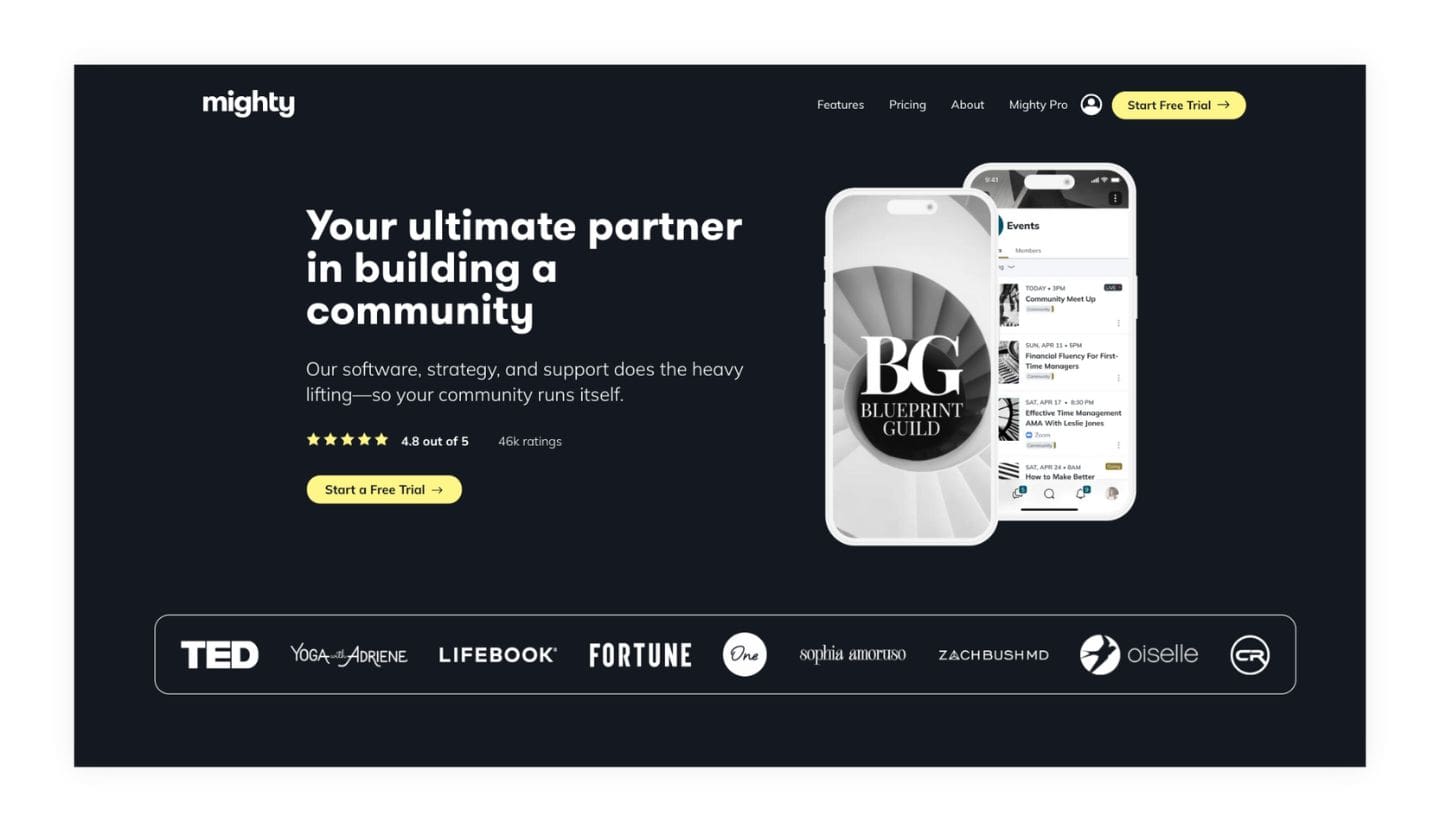
You can launch your Mighty Network with a free community, add a paid membership, or design your online courses with dedicated course communities, events, live streaming, and more.
Pros
-
Robust set of features geared toward community growth
-
Three unique plans offered to fit your needs
-
Free trial available
Cons
-
Limited templates
-
Isn’t the most affordable option on the market
-
Lacks many integrations with key tools and platforms
-
It’s clunky in terms of migrating your existing content or audience from another platform
Uses
-
E-learning instructors
-
Life coaching
-
Video creators
-
Live streamers
-
Podcasters
-
Community
-
Hobbyists
Podia
Thousands of creators use Podia to bring their entire business into a single platform. And, while it’s free, the platform has all the tools that creators will need to keep growing. This is website building, email marketing, and community under one roof.
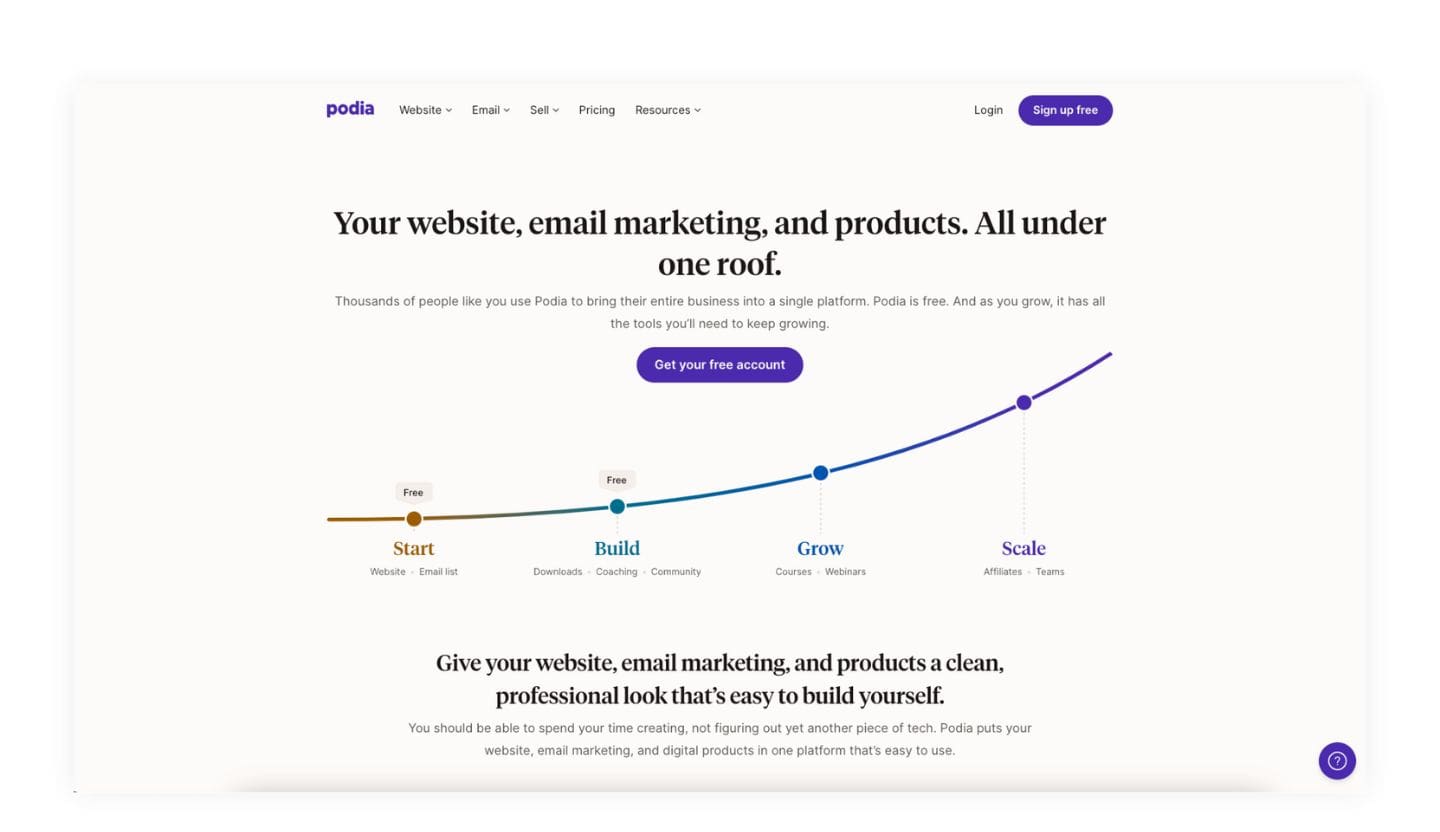
Plus, Podia has what creators need to sell digital content through their own e-commerce site, and they’ll migrate your content and customers for free when you choose a yearly subscription.
Pros
-
Perfect for any kind of digital product
-
User friendly, especially for beginners
-
With its all-in-one digital e-commerce emphasis, you can do a lot with one subscription
Cons
-
No mobile app available
-
Lacking in advanced customization
-
Site-building features don’t stack up to dedicated website building platforms like Squarespace
Uses
-
Podcasters
-
Community
-
Video creators
-
Merchandising
-
E-learning instructors
Uscreen
Uscreen is a video subscription platform that launched in 2015 and aims to be the only site focused entirely on making it easy for creators to deliver a premium membership with video content, built-in community, mobile apps, and subscription revenue.
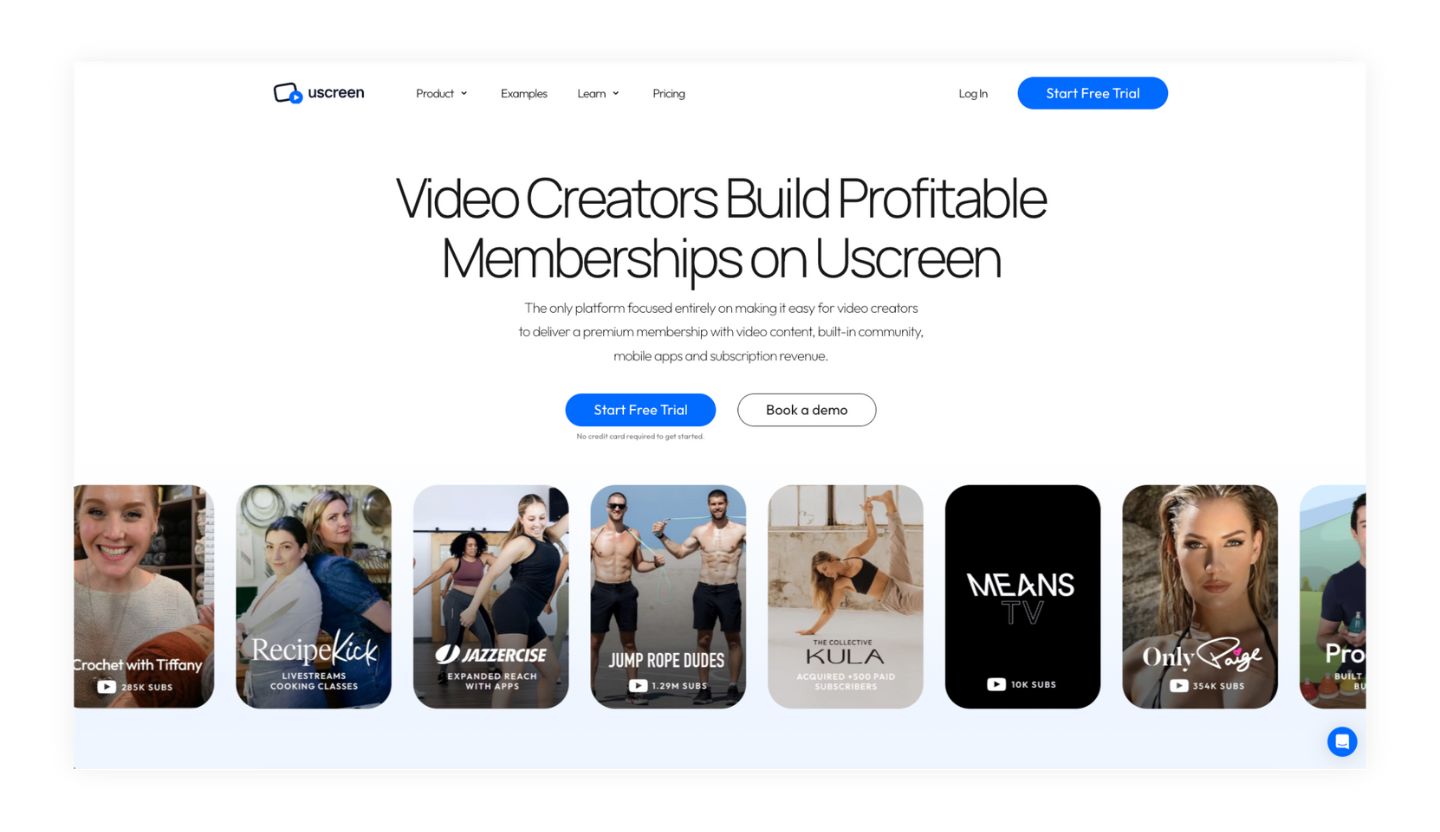
And, while it’s true that video subscription is Uscreen’s emphasis, the focus has created some integration barriers. For example, paid Uscreen members must build their site exclusively through Uscreen as opposed to integrating video hosting into their existing website. This could potentially pigeonhole content creators who already have a site built and want to avoid starting from scratch.
Pros
-
24/7 support
-
An all-in-one CMS platform, great for building a site from the ground up
-
Live streaming features, like audience analytics and audience engagement
-
A true OTT (Over the Top Media Service), allowing membership app development with zero coding
Cons
-
No embeddable video player
-
You must create your site exclusively through Uscreen
-
High price point for creators
-
No Facebook Live integration
-
No Twitch integration
-
No Shopify integration
Uses
-
Video creators
-
Live streamers
-
Podcasters
-
E-learning instructors
Teachable
Like the aforementioned Mighty Networks, Teachable was created to help you sell courses, coaching, and digital downloads. One of the great things about this site is its focus on equipping creators to engage their online audiences and get paid on their own terms.
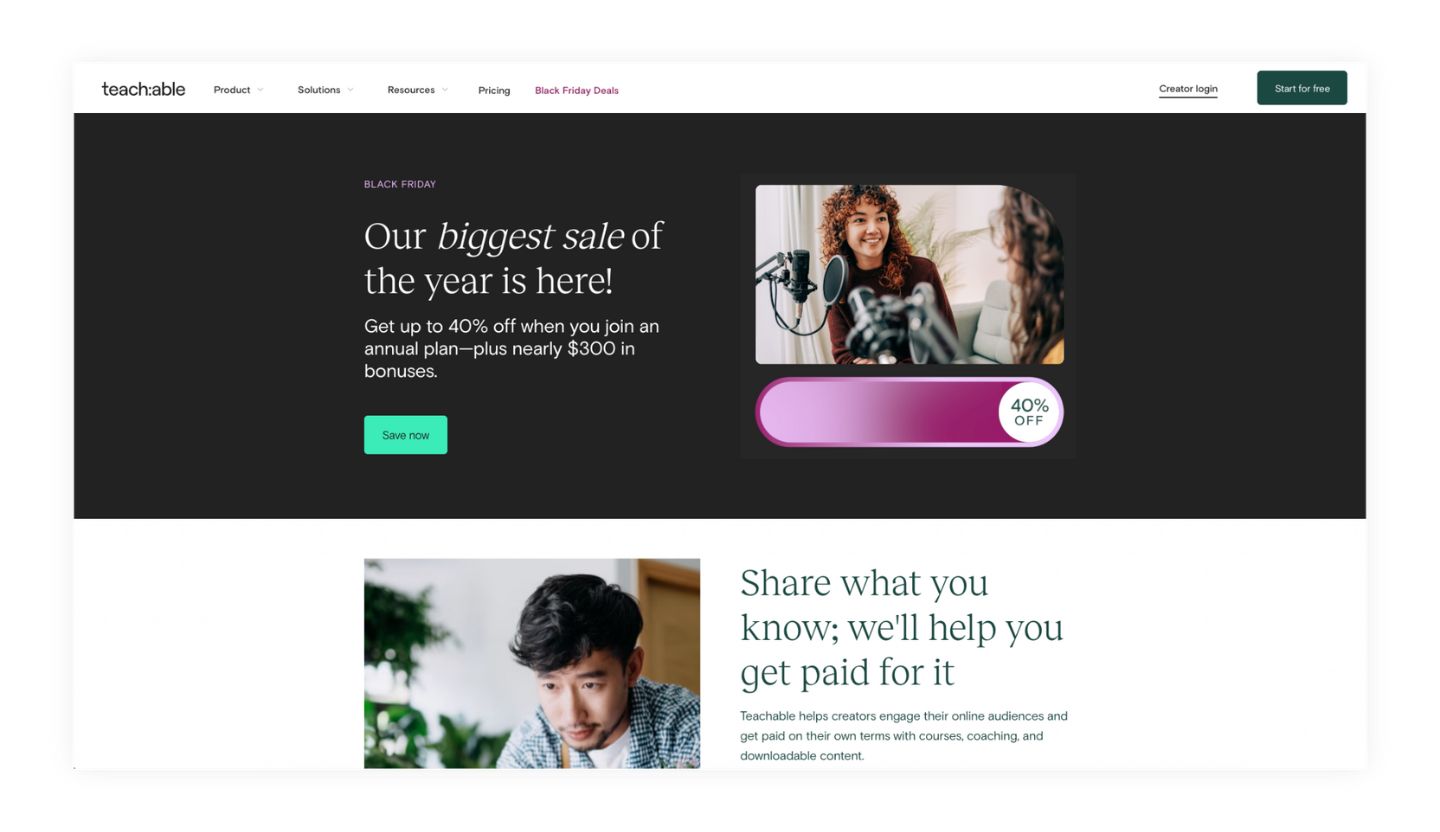
This means that Teachable has the structure and formula to help you grow your site as your audience (and their needs) grow with a “free to start, simple to scale” model.
Pros
-
Consolidate your entire community on one site
-
They offer a lot of resources to help get you started, like “teachable:u” and a podcast
-
Take advantage of a suite of AI-powered tools that helps creators streamline their work
Cons
-
Free option isn’t available if your community exceeds 10 students
-
Free option limits how you can manage your class and users
-
Lacks features to help you sell and market your courses
-
Limited in site-building functionality
Uses
-
E-learning instructors
-
Life coaching
-
Video creators
-
Livestreamers
-
Podcasters
-
Community
-
Hobbyists
Buy Me a Coffee
We adore this site because of its simple, streamlined approach to empowering content creators. And yes, the name is self-explanatory! Buy Me a Coffee was created as a way for creators like you to receive donations, start a membership site, and sell just about anything.
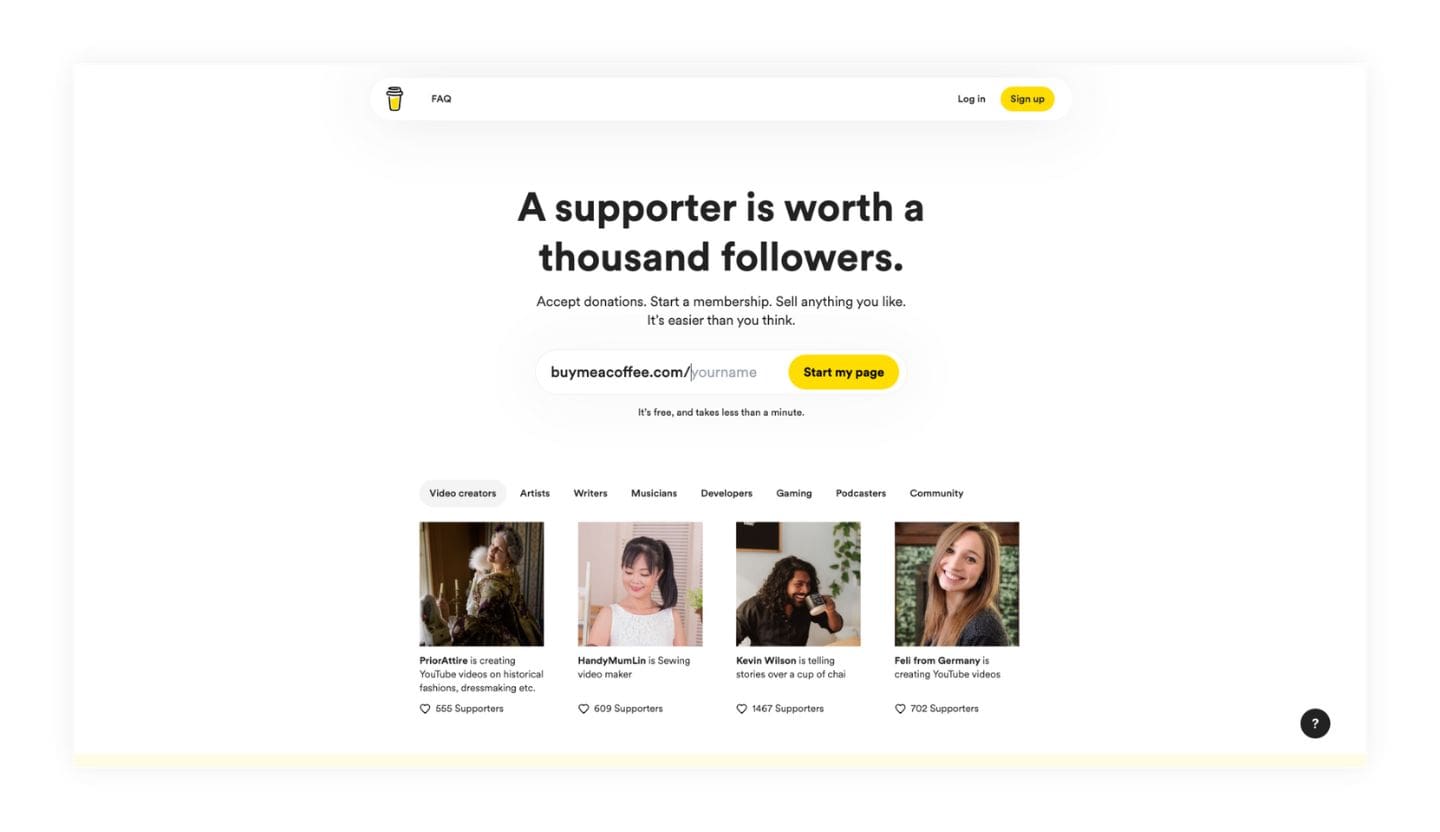
From their site: “In just a couple of taps, your fans can make the payment (buy you a coffee) and leave a message. They don’t even have to create an account!” And, c’mon . . . who doesn’t love coffee?
Pros
-
Easily capture and download your email lists
-
Receive donations and payments fast (in less than 30 days)
-
Unlike Ko-Fi, BMaC offers newsletter capabilities and has a mobile app
Cons
-
Customer support is lacking in terms of response time
-
Users reported a lot of bot accounts that flood and scam the site
-
Because of its simplicity, it’s limited in some features needed to grow your membership site
Uses
-
Artists
-
Writers
-
Streamers
-
Podcasters
-
Video creators
-
Community groups
Switcher Studio
Switcher Studio is an affordable, end-to-end video creation and commerce platform. With a suite of video creation tools and features, Switcher supports content creators who want to: monetize their video on their terms; upload playlists or live stream directly to their site; record, stream, or multistream pro-quality video to their followers; and so much more.
If that describes you, then Switcher Studio may be just what you’re looking for.
And, unlike Uscreen, the embeddable Switcher Player easily integrates with any CMS so that you’re not boxed-in. No coding experience? No problem. The easy-to-implement Switcher Player turns your domain into a private content channel that’s free from competing ads and content recommendations.
Pros
- Embed on any website
-
Upload or livestream video
-
Integrated video paywalls
-
More affordable than many hosting and monetization platforms
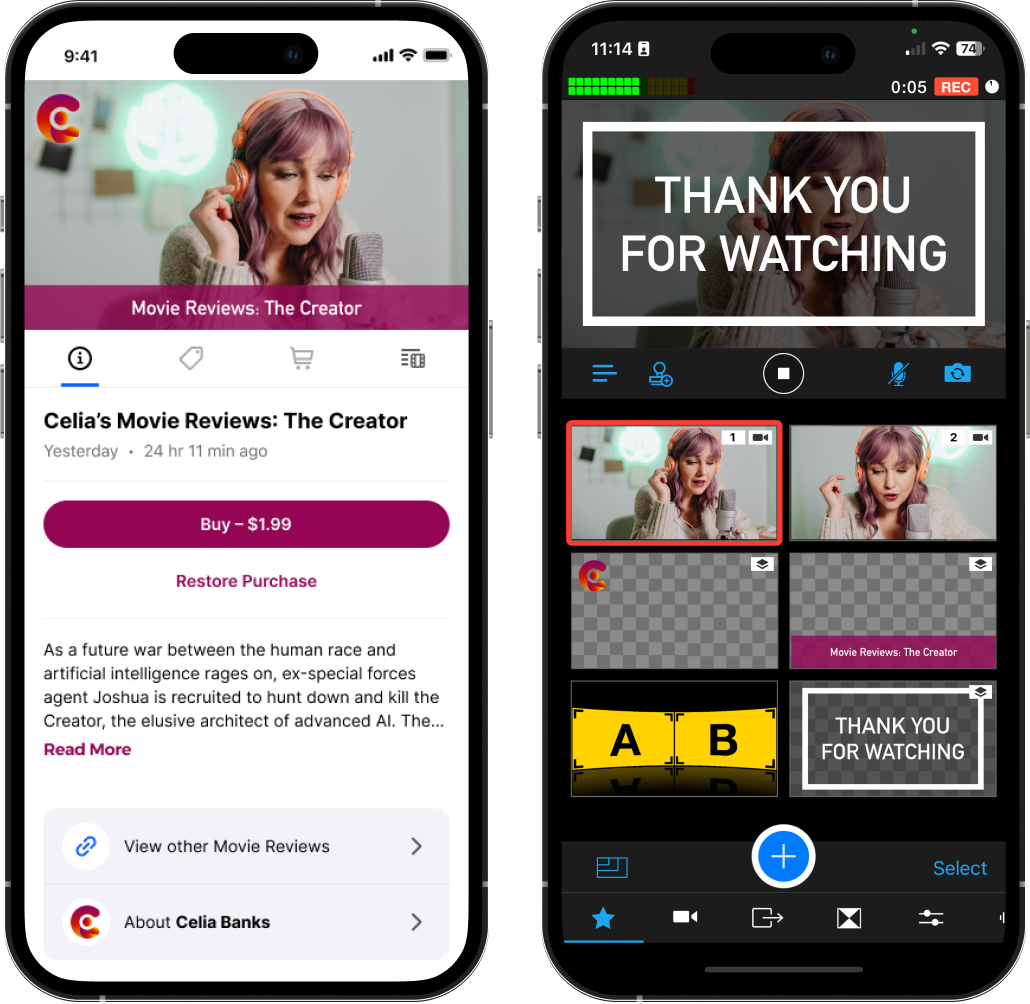
Cons
-
Free trial is limited to two weeks
-
Lacks browser-based live streaming
-
Video production tools are limited to iOS-only
Uses
-
Live streamers
-
Anyone looking to create, share, or monetize live and recorded videos
How can I monetize my video content with Switcher Studio?
Monetizing your content with the Switcher Player is simple and versatile, and works with any website. You can upload videos or stream to your site. Display free content or implement a paywall. Compile and edit playlists to keep viewers engaged.
And you can sell your videos via one-time purchases or a recurring subscriptions:
-
Create a pass
-
Set your price
-
Select the videos you want to include in the purchase
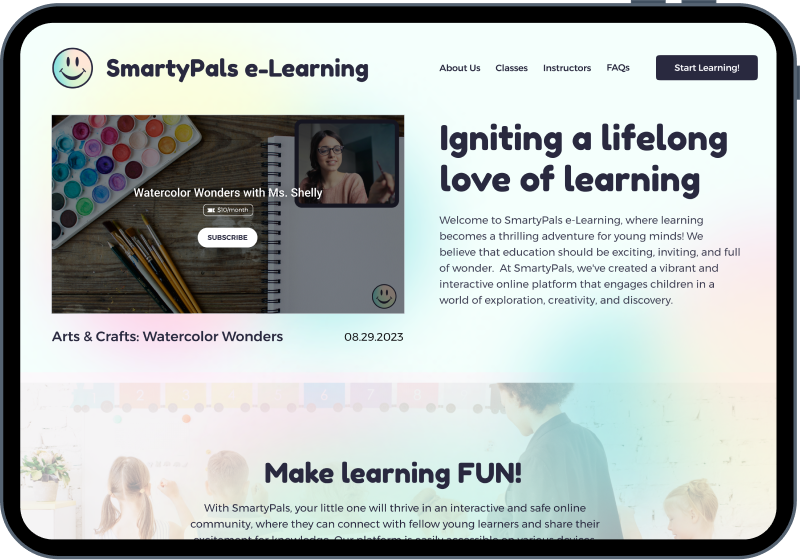
Passes are versatile and completely customizable: Create one for a single video or an entire playlist; include a combination of videos that you’ve already created, and/or upcoming livestreams; then decide what to name the pass, what the price is, and exactly which videos to include in the collection.
Yeah, it’s that simple.
And the possibilities for what you can monetize are truly endless:
-
A live stream hosted directly on your website
-
An e-learning suite you’ve curated into a single playlist
-
Short-form/narrative video content
-
So much more!
Whatever you’re creating, gating video content empowers you to earn revenue directly from the content you’re already producing. Plus, creating gated content is a great way to add effective inbound marketing to your business with little extra work.
So, what’s the hold up, creators? Give Switcher Studio a try for free for 14 days and see why countless other content creators are leaving sites like Patreon in favor of Switcher’s streamlined, intuitive platform.
Subscribe to the blog
Sign up to receive notifications whenever a new blog post is published. You may unsubscribe at any time.

Share
About the Author

Julian R. Vaca is an actor, writer, and marketer. His work has appeared in The Nerd Daily, Writer's Digest, and more. His debut Young Adult series "The Memory Index" is available wherever books are sold. Connect with Julian on Instagram: @JulianRayVaca
All posts by Julian R. Vaca



